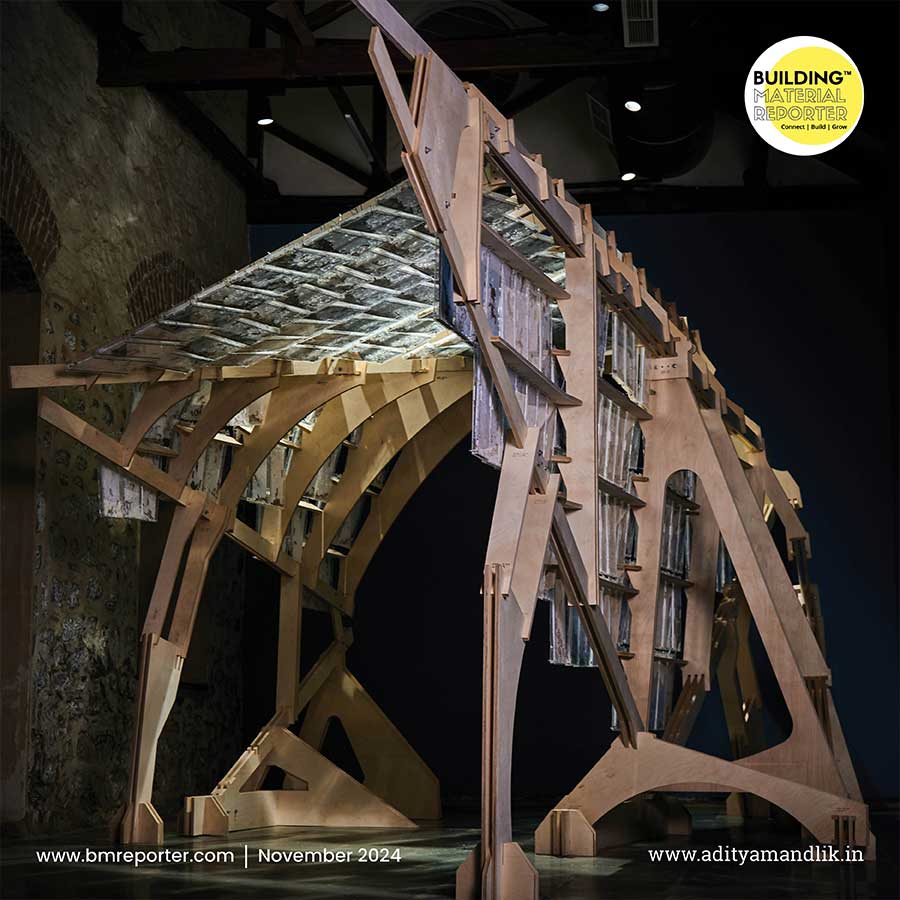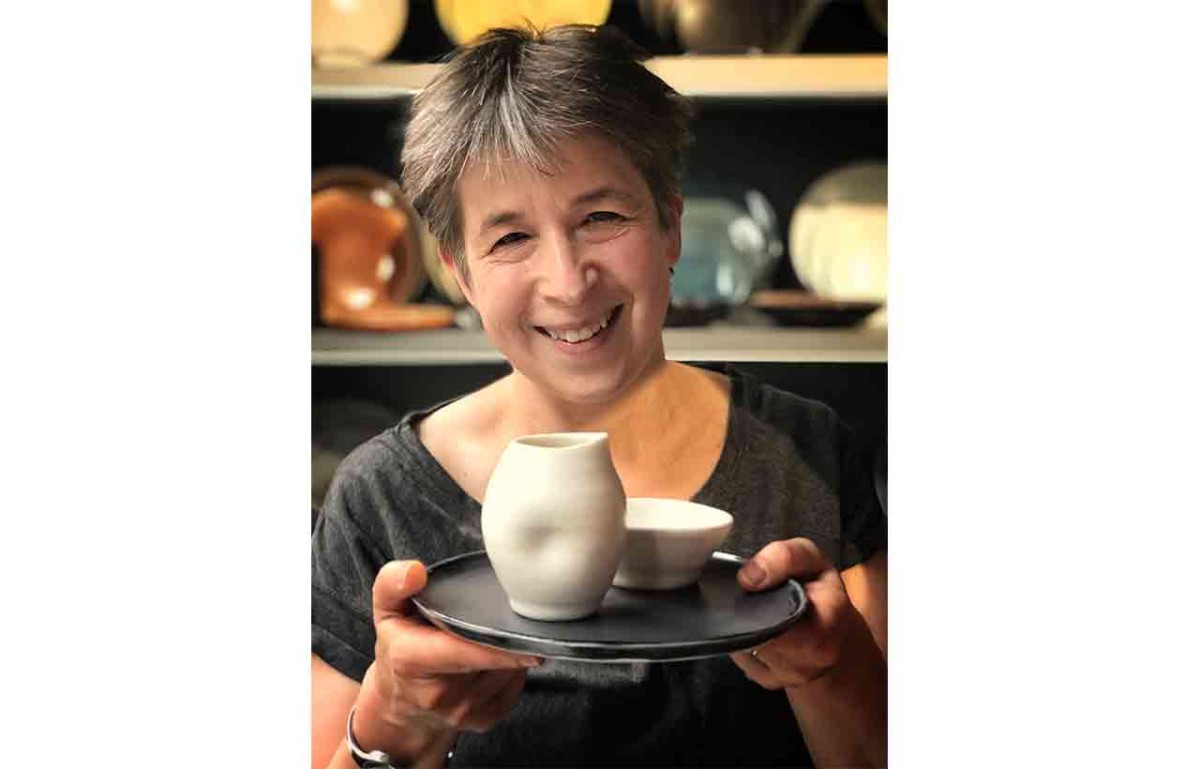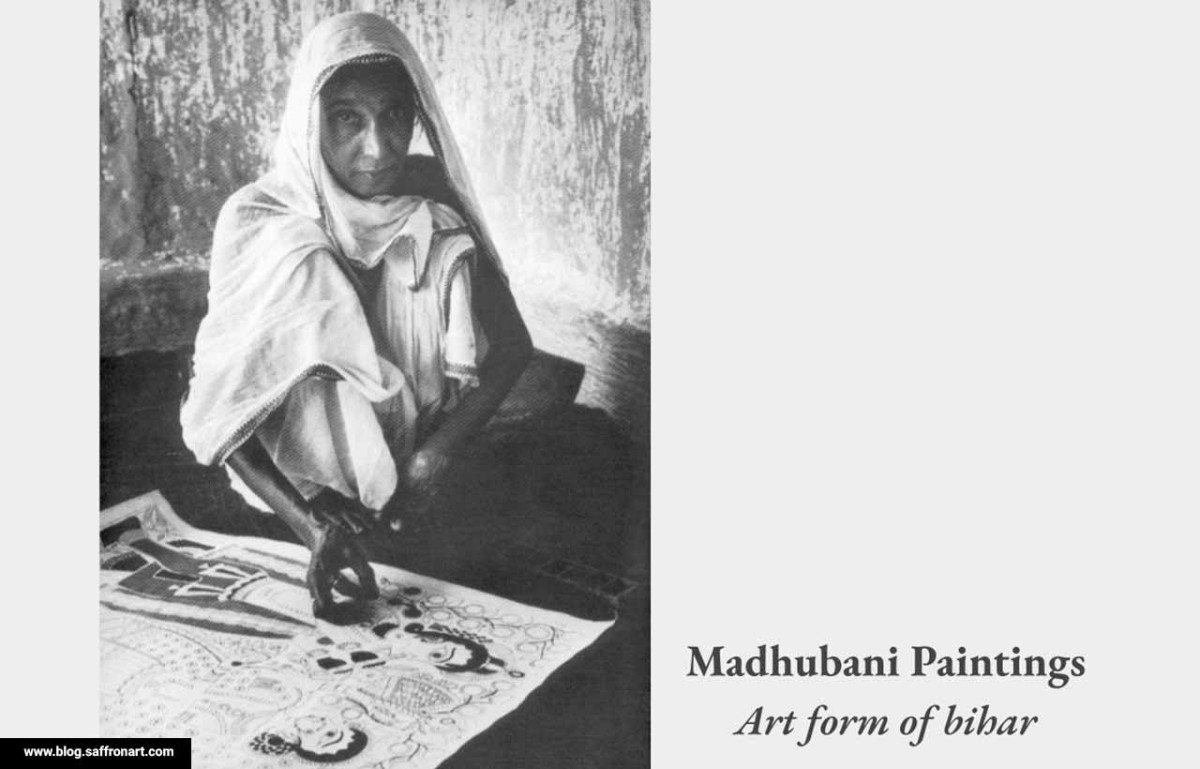The Future of Eco-Design: Inside Biomaterial Pavilion
- November 6, 2024
- By: Ar. Priyanshi Shah
- SUCCESS STORIES
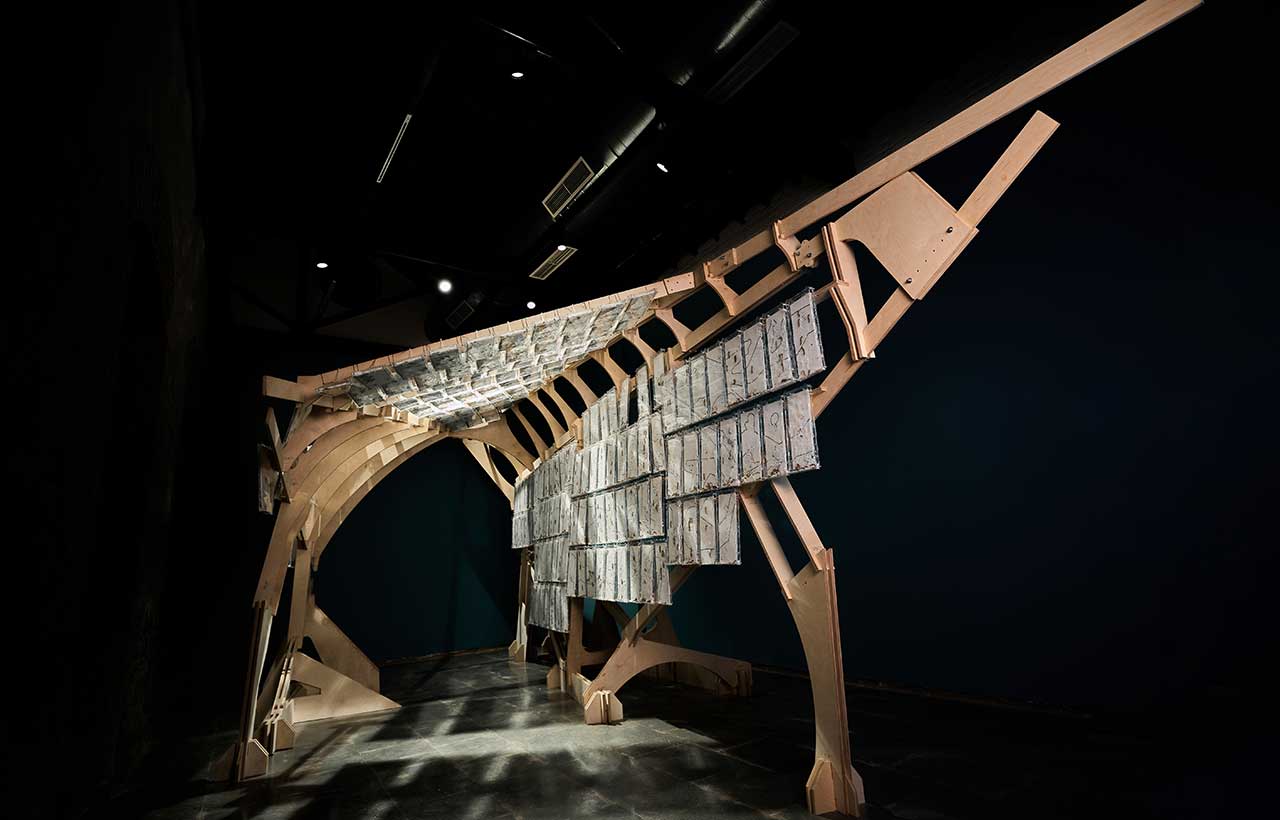 Studio Aditya Mandlik designed a pavilion that combines Bio- intelligence with traditional notions of architecture. He experimented with bio-synthetic materials with an expression to create a futuristic nature-inspired intelligent structure. Adopting sustainability and the use of synthetic materials reflects the process of regenerative design as the ecological solution for the environment. This Pavilion envisions a future where design transcends human-centred thinking, fostering deeper collaboration with nature as Bio-intelligence.
Studio Aditya Mandlik designed a pavilion that combines Bio- intelligence with traditional notions of architecture. He experimented with bio-synthetic materials with an expression to create a futuristic nature-inspired intelligent structure. Adopting sustainability and the use of synthetic materials reflects the process of regenerative design as the ecological solution for the environment. This Pavilion envisions a future where design transcends human-centred thinking, fostering deeper collaboration with nature as Bio-intelligence.
Pavilion
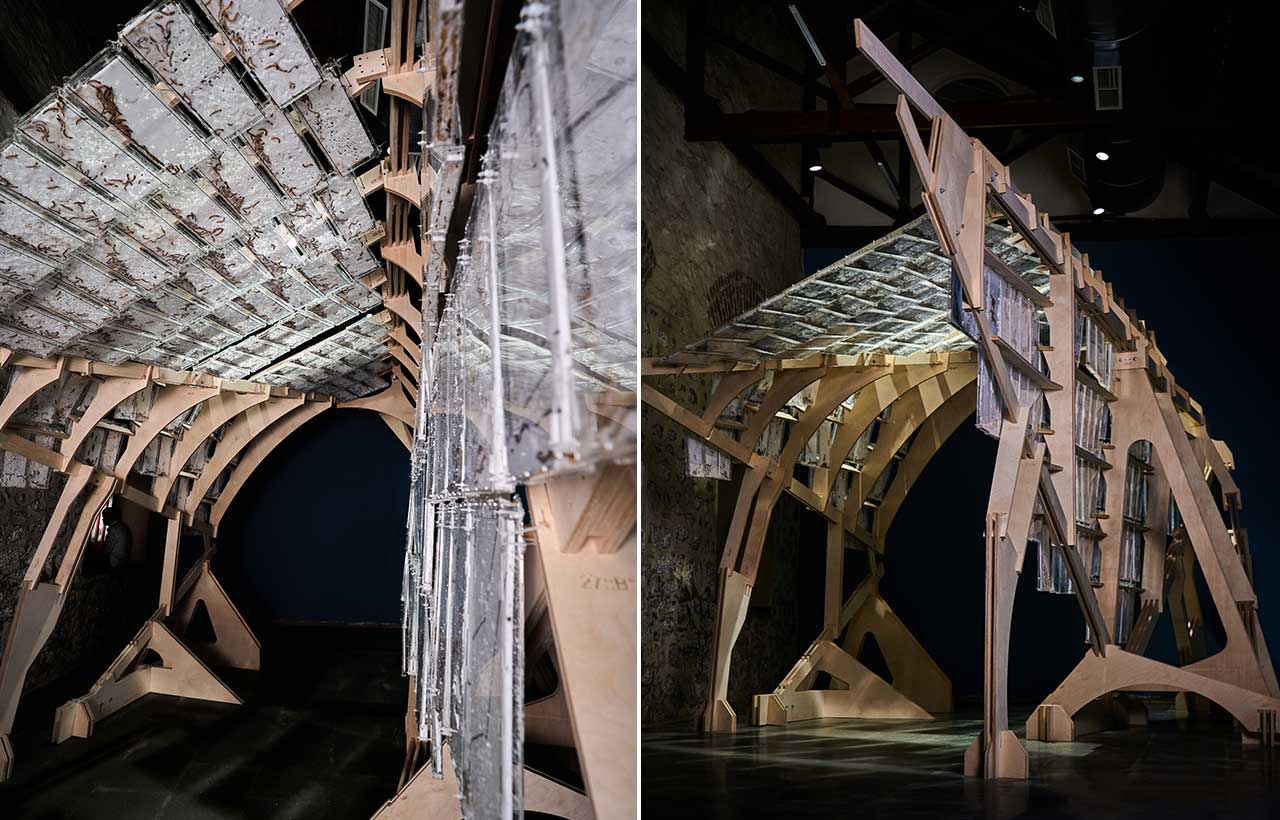 The Factory 5.0 pavilion is a living architectural experiment that merges human innovation with biological processes, symbolizing a post-anthropocentric future. Conceptualized as a site-sensitive project for The New Great Eastern Mills in Mumbai, the pavilion pays homage to the city’s industrial heritage.
The Factory 5.0 pavilion is a living architectural experiment that merges human innovation with biological processes, symbolizing a post-anthropocentric future. Conceptualized as a site-sensitive project for The New Great Eastern Mills in Mumbai, the pavilion pays homage to the city’s industrial heritage.
“At the heart of the exhibition is the “Factory” concept, illustrating how creation can flourish through the cooperation of human innovation and natural systems. The installation embodies co-creation, where diverse approaches converge to reshape the future of our habitats. This living structure engages visitors in a dynamic experience where their movements influence light, subsequently affecting the worms’ activity, thus fostering a dialogue between nature and design, continuously reshaping itself.” expresses Aditya Mandlik
Bio-Synthetic Architecture and Natural Intelligence
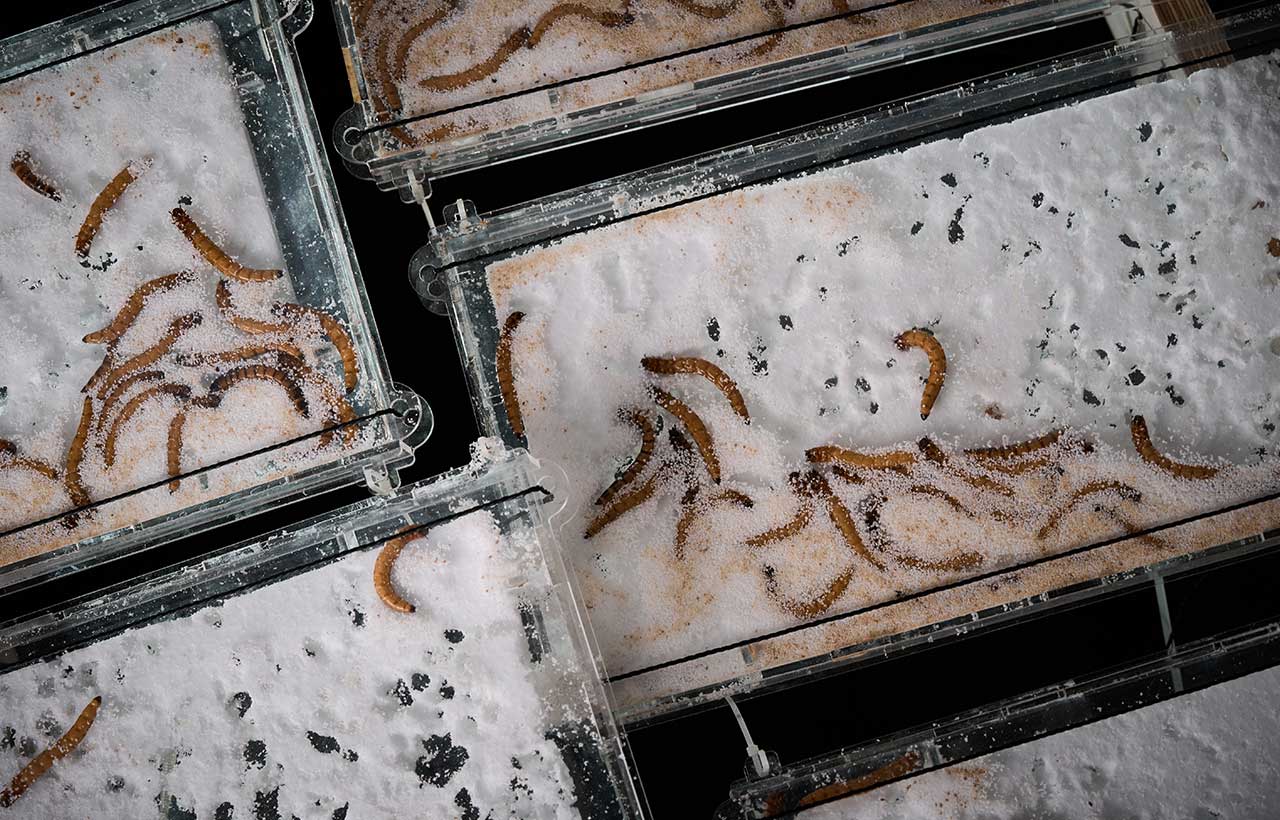 The pavilion challenges contemporary urban environments. Styrofoam represents matter once believed impossible to decompose - plastic. Through this collaboration with nature, the Pavilion demonstrates how decomposition itself can become an act of creating architecture. Constructed from 546 digitally crafted wooden components and 210 styrofoam plates, the structure is inhabited by almost 7,000 kingworms, enclosed in transparent acrylic containers. Over time, these organisms decompose the styrofoam, creating an evolving spatial environment where light and shadow interplay, orchestrated by the gradual decay. This curated process challenges traditional notions of permanence and control, establishing a symbiotic relationship between bio-synthetic architecture and natural intelligence.
The pavilion challenges contemporary urban environments. Styrofoam represents matter once believed impossible to decompose - plastic. Through this collaboration with nature, the Pavilion demonstrates how decomposition itself can become an act of creating architecture. Constructed from 546 digitally crafted wooden components and 210 styrofoam plates, the structure is inhabited by almost 7,000 kingworms, enclosed in transparent acrylic containers. Over time, these organisms decompose the styrofoam, creating an evolving spatial environment where light and shadow interplay, orchestrated by the gradual decay. This curated process challenges traditional notions of permanence and control, establishing a symbiotic relationship between bio-synthetic architecture and natural intelligence.
Concept
The choice of worms to decompose synthetic materials is significant, and deeply tied to the historical context of The New Great Eastern Mills, established in 1839—the same year the vulcanization of natural rubber was invented. This breakthrough led to the development of plastics, originally conceived as an ecological innovation aimed at reducing human dependency on ivory and curbing the hunting of elephants.
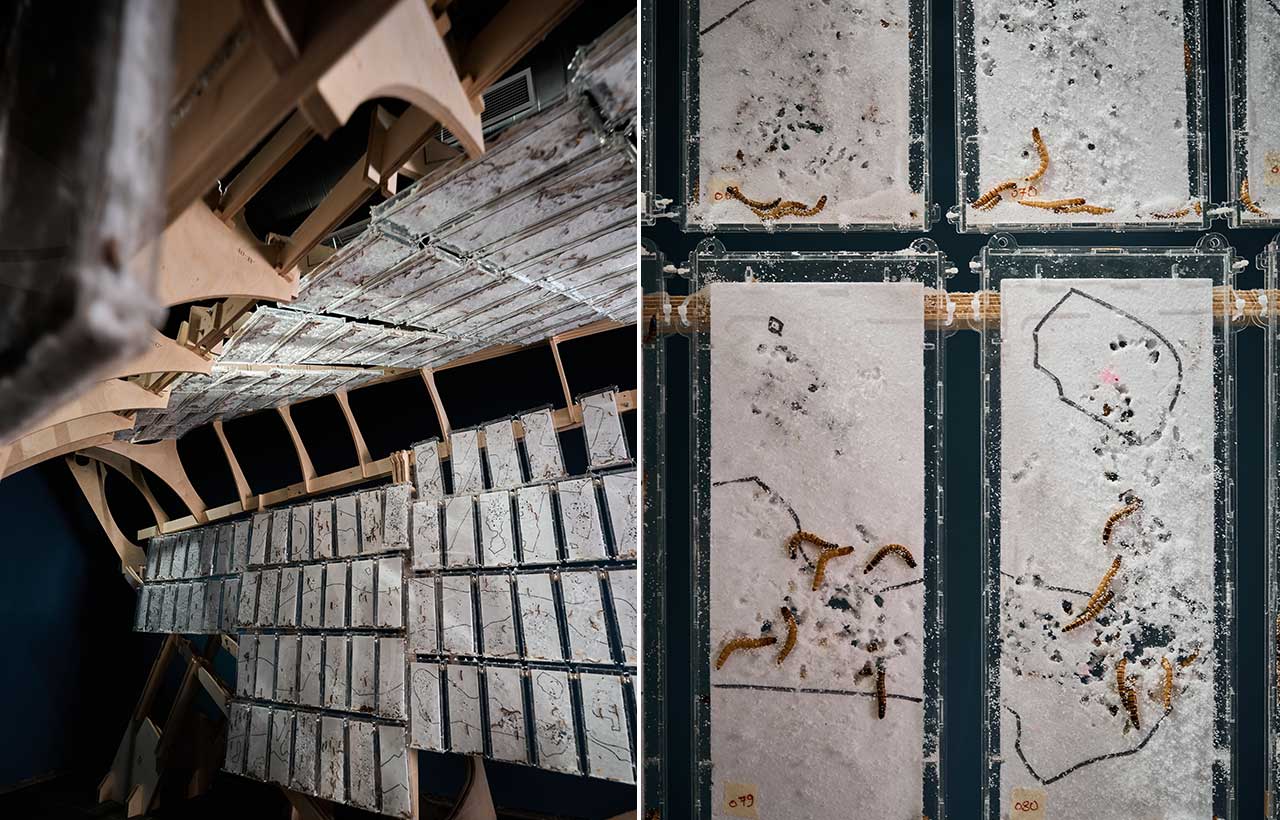 The mills, as part of the First Industrial Revolution, played a crucial role in shaping Mumbai’s urban and economic stature. Now, in the Fifth Industrial Revolution, the pavilion positions itself as a vector of transformation, where the curated decomposition of styrofoam becomes an architectural gesture reflecting contemporary concerns around sustainability and ecological balance.
The mills, as part of the First Industrial Revolution, played a crucial role in shaping Mumbai’s urban and economic stature. Now, in the Fifth Industrial Revolution, the pavilion positions itself as a vector of transformation, where the curated decomposition of styrofoam becomes an architectural gesture reflecting contemporary concerns around sustainability and ecological balance.
Ecological Intelligence
Designed for disassembly, the pavilion emphasizes adaptability and sustainability. Its components are repurposed after the exhibition, aligning with the broader theme of regenerative design. This approach reflects a shift from viewing plastics as ecological solutions to recognizing their environmental impact, addressing these issues through biologically driven processes. The decomposition of plastics by king worms serves as both a literal act of decarbonization and a metaphor for architectural processes rooted in ecological intelligence.
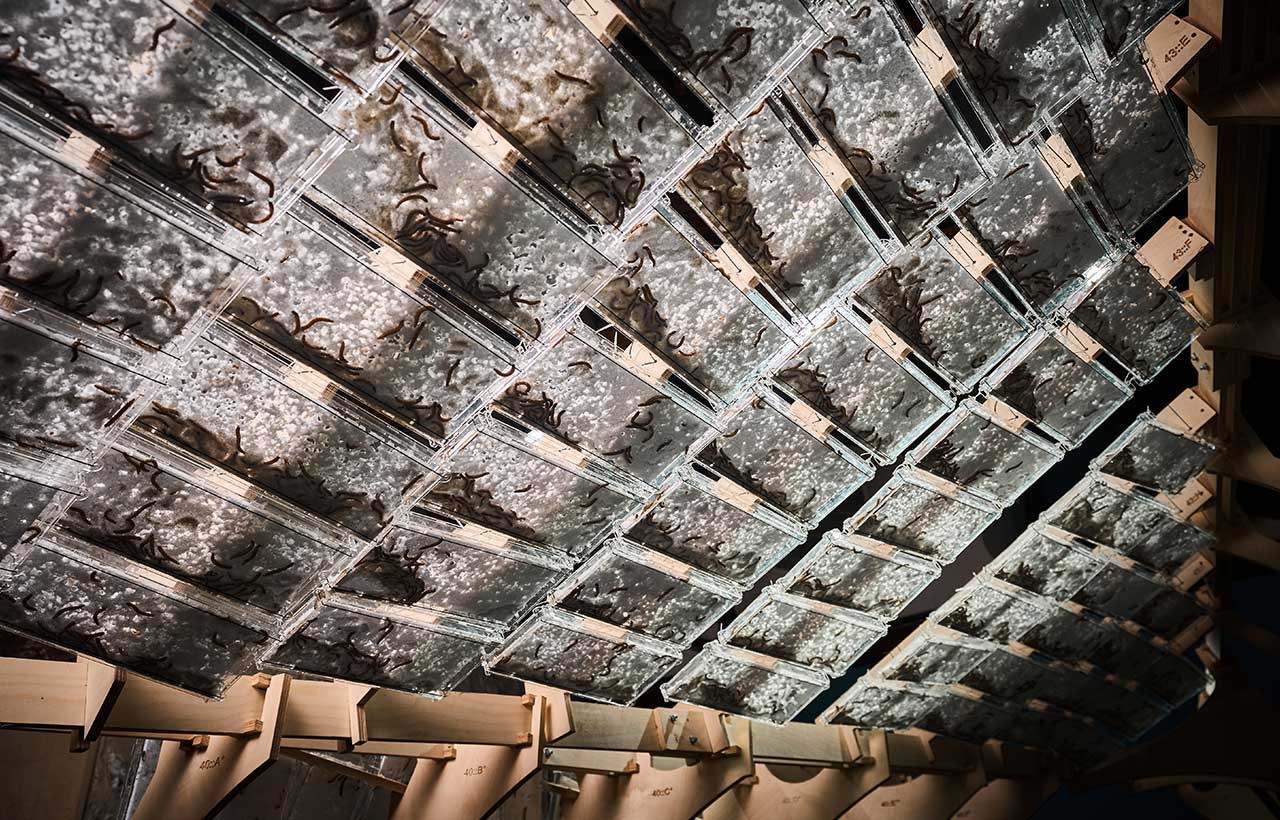 As the pavilion transforms throughout the exhibition, it becomes a dynamic, interactive element, offering a speculative vision of future urban production, where human and non-human intelligences collaborate. This transformation, while a physical degradation of materials, also functions as a commentary on the evolution of architectural design in response to the pressing ecological challenges of our time. At the end of the exhibition, the styrofoam plates will be maintained as ‘objects of remembrance, encapsulating the pavilion’s worldly journey and its engagement with both documented and future discourses.
As the pavilion transforms throughout the exhibition, it becomes a dynamic, interactive element, offering a speculative vision of future urban production, where human and non-human intelligences collaborate. This transformation, while a physical degradation of materials, also functions as a commentary on the evolution of architectural design in response to the pressing ecological challenges of our time. At the end of the exhibition, the styrofoam plates will be maintained as ‘objects of remembrance, encapsulating the pavilion’s worldly journey and its engagement with both documented and future discourses.
Sustainable Urban Experience
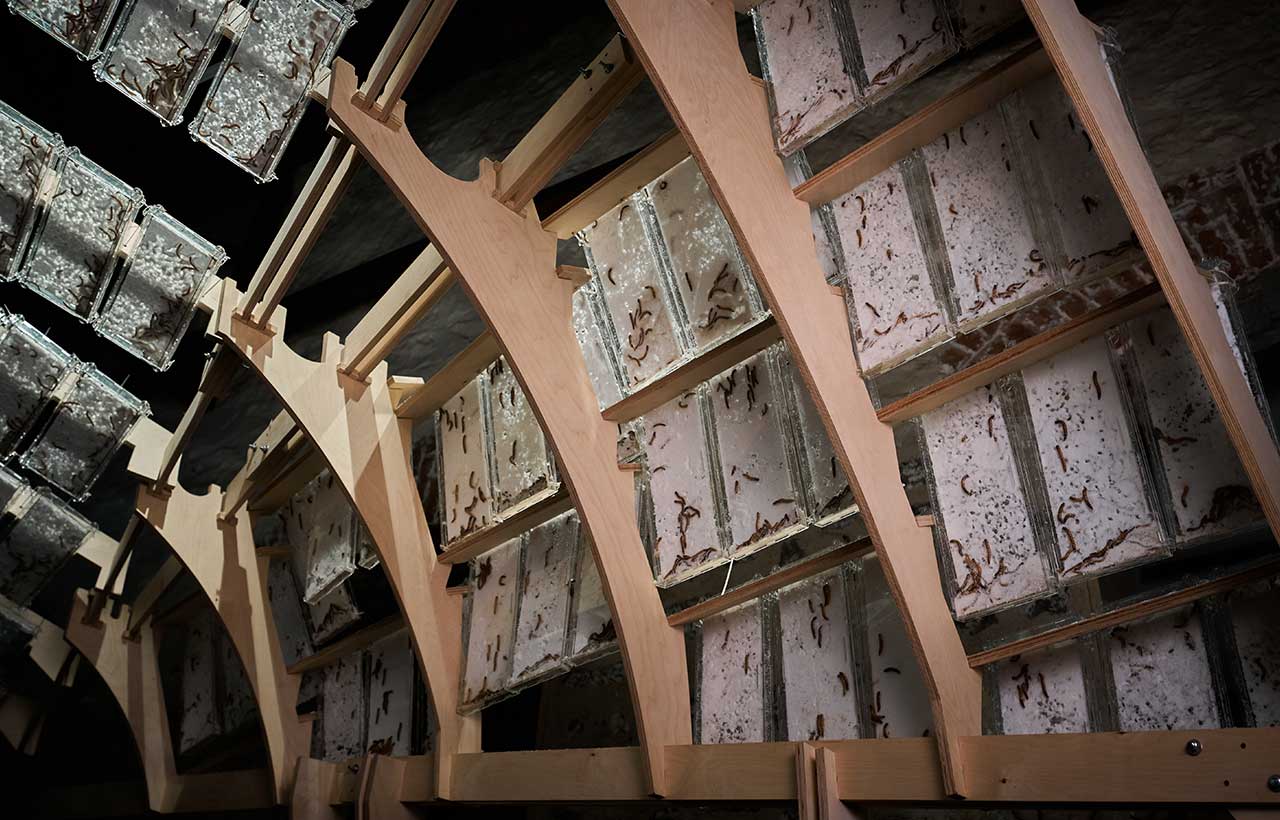 By embracing nature as a co-creator, the pavilion envisions a future where architectural practices are harmonized with ecological cycles, fostering a sustainable urban experience. It moves away from human-centric design rationalities toward an integrated, collaborative model, reflecting the urgent need to address the environmental consequences of the very materials that helped build modern cities. Through this act of biological collaboration, the pavilion points toward a future where decarbonization and regenerative design lie at the heart of architectural innovation.
By embracing nature as a co-creator, the pavilion envisions a future where architectural practices are harmonized with ecological cycles, fostering a sustainable urban experience. It moves away from human-centric design rationalities toward an integrated, collaborative model, reflecting the urgent need to address the environmental consequences of the very materials that helped build modern cities. Through this act of biological collaboration, the pavilion points toward a future where decarbonization and regenerative design lie at the heart of architectural innovation.
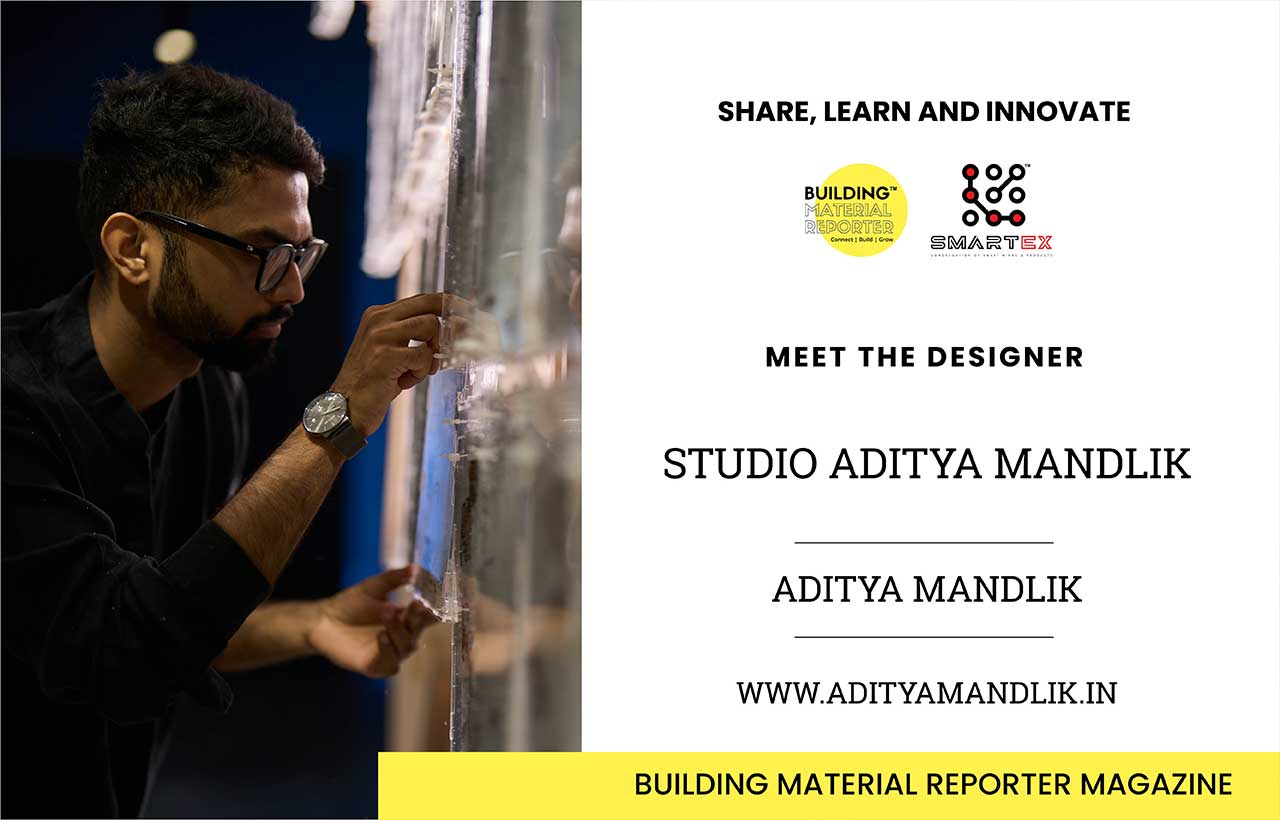 Stay updated on the latest news and insights in home decor, design, architecture, and construction materials with BMR.
Stay updated on the latest news and insights in home decor, design, architecture, and construction materials with BMR.


